Phenom II Performance
The addition of the 955BE and 945 to the top of the Phenom II line now provides uncompromised choices of Phenom II in the midrange. As mentioned in the launch review, Phenom II is now the top performer in the midrange, with Core i7 owning the high-end. Even overclocking is once again an area where AMD need apologize to no one. The latest Phenom II cores are incredible overclockers, yielding even better performance. With the 955BE performance fresh on our radar, it was impossible not to choose the 3.2GHz 955BE as the heart of the latest Phenom II performance PC.
| AMD Phenom II Performance PC | ||
| Hardware | Component | Price |
| Processor | Phenom II x4 955 Black Edition (3.0GHz x4 125W 4x512KB L2, 6MB L3) |
$245 |
| Cooling | Xigmatek Dark Knight-S1283V | $40 |
| Video | MSI Radeon HD 4890 1GB - OC Edition (After $20 Rebate) | $230 |
| Motherboard | Gigabyte GA-MA790XT-UD4P AM3 (after $15 Rebate) | $125 |
| Memory | OCZ Extreme Edition 4GB (2x2GB) DDR3-1600 (PC3 12800) OCZ3X16004GK 7-7-7 ($83 less $30 Rebate) | $53 |
| Hard Drive | Western Digital Caviar WD1001FALS 7200RPM Sata 3/0Gb/s 1TB | $105 |
| Optical Drive | LG BD/HD DVD / 16x DVD+/- RW GGC-H20L - Retail | $109 |
| Audio | On Motherboard 8-channel | - |
| Case | Lian Li PC65B Black Aluminum Mid Tower | $100 |
| Power Supply | IN WIN Commander 750W SLI/CrossFire 80 Plus Modular ($140 less $50 Rebate) | $90 |
| Base System Total | $1097 | |
| Display | ASUS VW266H Black 25.5" 2ms(GTG) HDMI WUXGA LCD Monitor (1920x1200) ($350 less $30 Rebate) | $320 |
| Speakers | Logitech G51 155W RMS 5.1 Speakers - Retail | $135 |
| Input | Microsoft CA9-00001 Black PS/2 Standard Keyboard and Optical USB/PS2 Mouse - OEM | $16 |
| Operating System | Microsoft Vista Home Premium OEM | $99 |
| Complete System Bottom Line | $1667 | |
| SSD (Optional) | OCZ Vertex OCZSSD2-1VTX60G 2.5" 60GB SATA II MLC Internal Solid state disk | $209 |
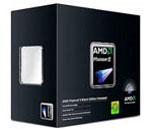 |
For detailed information on the Phenom II, please read yesterday's Phenom II X4 955 review. The Phenom II 955 at 3.2GHz is the fastest of the currently shipping AMD Phenom II processors, and it is built on a new stepping Phenom II 45nm core. The Phenom II is very similar in L2/L3 cache configuration to the Intel Core i7. Performance is also the best among today's midrange processors, and the 955 is only outperformed by the high-end Intel Core i7 series. As the latest 45nm AMD processor the Phenom II 955 also overclocks very well, matching or exceeding the very best Intel Core 2 Quad performance.
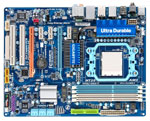 |
We've paired the Phenom II 940 with the new Gigabyte GA-MA790XT-UD4P motherboard based on the 790X chipset. The 790X is very similar to the 790GX chipset except it does not provide on-board graphics. It also supports the newest AM3 Phenom II processors and DDR3-1066/1333/1600 memory. Gigabyte combines the 790X with the latest AMD SB750 south bridge. This combo provides one x16 slot running at x16, a second x16 slot running at x8, three PCIe x1 slots, and two PCI slots. There are eight 3Gb/s SATA ports, a parallel port, and support for SATA RAID 0/1/5/10, 2600MHz HyperTransport, and maximum memory of 16GB in four slots.
The motherboard rear panel provides eight USB 2.0 ports, two Firewire, PS/2 keyboard and mouse, both optical and coax SPDIF out, and six audio jacks for the I-channel on-board audio. In addition there are two USB headers for internal USB and one additional 1394a (Firewire) header. The Gigabyte 790X board provides plenty of expansion capabilities for a performance AMD system, as well as excellent overclocking capabilities for those who plan to overclock.
The 790X chipset provides a single PCIe X16 slot and a PCIe x8 slot. This is fine for a single card and many will be happy with CrossFire that works as two PCIe x8 slots on the 790GX/X motherboards. However, if you have to have the very best CrossFire performance possible you should look for a motherboard based on the 790FX chipset, which does provide true dual PCIe x16 performance. This may be important to some, which is why we point it out. Otherwise, there is little to complain about with the performance of this Gigabyte AM3 motherboard.
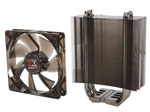 |
The Phenom II is not the hot CPU you find in the Core i7, but it still benefits from third party cooling - particularly if you plan to overclock with a CPU with OC capabilities like the 955BE. We paired the Phenom II 955BE with the same Xigmatek Dark Knight used in our value systems, which performed well in the lab. At $40 the Xigmatek is an excellent cooling value.
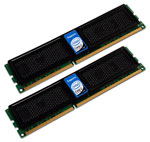 |
Since the Phenom II is dual-channel DDR3, the motherboard was populated with a 4GB kit of OCZ Intel Extreme Edition DDR3-1600. This memory is rated at 7-7-7 at DDR3-1600 and 9-9-9-at DDR3-1800. It is even faster at DDR3-1333 or DDR3-1066. Don't worry about the Intel designation as it will work fine with your new Phenom II 955BE. If you plan to extensively overclock you might have more flexibility choosing an even faster memory like DDR3-1800 or DDR3-2000, but our overclocking tests showed the highest memory speeds were somewhat wasted on the Phenom II and fast memory timings improved performance more. This fast and flexible memory gives both very fast timings and headroom when it is needed.
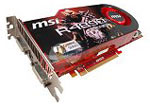 |
For the performance system, we upgraded the video card to ATI's latest Radeon HD 4890. As we stated in our review, the 4890 is basically a tweaked and overclocked 4870. It improves performance over the 4870 1GB and competes well with the GTX 275. On a pure performance level the 4890 and GTX 275 trade blows at different resolutions. MSI's overclocked HD 4890 bumps the clock speed up a little higher (880MHz instead of 850MHz), and with the current mail-in rebate it's $20 less than the GTX 275, so it gets our recommendation for the AMD performance build. Need even more power? Feel free to add a second card and run CrossFire. That should be enough for just about any current game at 2560x1600 (and is typically overkill for a 1080p display).
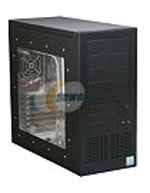 |
The case for the Phenom II performance system is a well-regarded Lian Li black all aluminum case. This Lian Li case has a reputation for being exceptionally quiet with its four 80mm fans with a fan speed controller and the excellent heat dissipation you expect from an all aluminum case. What is unique is the $40 savings on this case through the month of April, which reduces the cost to $100. There is even a side window for those who like a view of their working system.
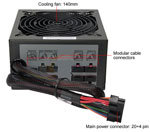 |
The power supply is the IN WIN Commander 750W modular with a 140mm double ball bearing cooling fan. This superb 80 plus certified power supply would be a bit rich for an upper midrange performance rig at a normal selling price of $140. However, there is currently a $50 rebate that reduces the net price to just $90. If this PSU interests you then grab it at this great price as we're sure the rebate will go away as more buyers discover this value.
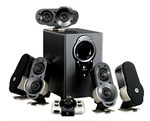 |
Most of our editors consider the onboard audio of motherboards to be adequate for even gaming these days. That is why we have not chosen a sound card for the performance midrange system. If you want more than that offered by onboard surround sound, the ASUS Xonar DX 7.1 is one of the top-performing audio cards on the market today. It is a great upgrade to the onboard sound if you want better sound quality. Game compatibility is excellent, but most game creators assume everyone has a Creative Labs sound card. If your main reason for having a powerful computer is gaming, you may prefer the Creative 7.1 Sound Blaster X-Fi Titanium at the same price. In our opinion, the sound quality is batter on the ASUS or an HT sound card, but game compatibility will never be a question with a Creative Labs sound card. We also upgraded to the Logitech G51 speakers. The Logitech rebate has ended, so the price is now $135 or so. They are still a decent value at that price.
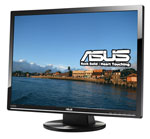 |
The LCD display resolution is still the 1920 horizontal of the 1080p value system, but the 26" displays run at a 16:10 aspect ratio and WUXGA (1920x1200). Regardless of the minor resolution differences, the size of the monitor is now 26", so everything on the screen is a little larger - great if your vision isn't the best. The ASUS VW266H 25.5" provides the preferred HDMI input, as well as DVI and an analog VGA port. Panel speed is rated at an incredible 2ms, but we have found most current LCD panels perform similarly and the speed rating does not really guarantee very much. The ASUS monitor provides a large sharp image, good colors, and fast panel speed at a very good price of $320 after rebate. It comes with DVI and VGA cables, but if you plan to connect with HDMI you will need to buy a separate HDMI cable. The ASUS is also available with a rotatable 2MB webcam attached for just $20 more.
The hard drive remains 1TB but we selected the Western Digital 7200RPM for the Phenom II performance system at $105. This was mainly a concession to those who bitterly complain whenever we choose the Seagate as our 1TB drive choice. The WD is an excellent 1TB drive and it has never had any issues with failure, where early Seagate 1TB drives were plagued with firmware issues. The Seagate drives with recent firmware have performed fine in our labs, but if you are a buyer who worries about that the WD is the better choice. Seagate still provides a 3-year warranty and our experience with filing for warranty service online with Seagate has been excellent. The choice is yours - the Seagate is $85 and the comparable WD is $105.
 |
The remaining components are the same as our value systems. The optical drive is the LG BD-ROM. The Microsoft OEM keyboard and optical mouse provide input and Vista Home Premium OEM runs the system. For more information on these components, you can refer to the descriptions on earlier pages.
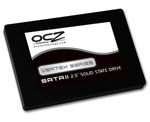 |
In response to those who have asked for SSD recommendations, it is possible to finally make SSD recommendations based on the months of research and testing performed on SSD drives at AnandTech. For more information on SSD test results please see our SSD Anthology and the SSD Update. In keeping with the midrange pricing, we have listed an SSD option of the 60GB OCZ Vertex for the Phenom II performance system, though you could use a larger Vertex SSD if it better meets your needs.










60 Comments
View All Comments
Gary Key - Monday, April 27, 2009 - link
I have not noticed poor SATA performance on the SB750. It is typically a few percent lower than the ICH10R in actual applications, but nothing that you ever notice on a day to day basis. As far as ACHI/NCQ problems, I have not experienced them with the SB710/750 yet.This includes Linux and Windows installations. I know people have complained about it, but I just have not seen it yet in probably 300+ installs of either operating system. The one problem I have right now is SSD performance is not up to par to the ICH10. AMD is working on a new driver to improve performance as the hardware is fine.
Wesley Fink - Monday, April 27, 2009 - link
Early AMD southbridges did suffer from the issues you describe. The design and performance has steadily improved with each new generation of southbridge, and AMD has come a long way from the SB400/450 days. I have forwarded your question to our motherboard Editor for more info on the state of the SB750 southbrudge.lefenzy - Friday, April 24, 2009 - link
Would Anandtech please stop recommending 1080P monitors? LCD manufacturers are tricking consumers by selling screens with less area with this marketing gimmick.JarredWalton - Friday, April 24, 2009 - link
I don't see how it's a "trick", since the resolution is clearly stated. If you want to complain about it being "less monitor", I'd be far more upset about all the TN panels now being pushed into budget displays. I've used/tested several, and they're "fine" for most users, but they will never be the quality of an S-PVA, S-MVA, or S-IPS LCD.Honestly, if you want a good IPS display at a reasonable cost, what I'd really recommend these days is to grab a 32" HDTV - check it out in person though to make sure it's not a TN panel, because those are showing up as well. Just look at the vertical viewing angles and it should be clear whether it's TN or not.
MadMan007 - Saturday, April 25, 2009 - link
Can't fit a 32" TV on my desk nor sit ~3 feet away from it comfortably :p I wrote about the monitors as well. I will say that 1920x1080 is a win over 1680x1050 IF they are similar prices or a bit more and same panel types, at least you're getting more for the money. ex: a 1920x1080 TN for $50 more than a 1680x1050 TN. It's a ripoff when they substitute less vertical space in the same supposed screen size (the diagonal measurement allows them to cheat there) for the same price.Where this article fails is in not even mentioning panel types nor aspect ratios, and using a freaking TN in a $1600 system.
These guides are starting to read more like advertising copy when they push fudged specs rather than informing readers.
lopri - Friday, April 24, 2009 - link
Thank you for this wonderful guide. It's been a while since I planned to build a Phenom system, and it looks like I can finally finish it thanks to this guide. I do have a couple of questions.1. There are many DDR3 sticks marketed as 'i7 edition'. Is it safe to use those sticks on AM3 platform? (both compatibility and overclocking-wise)
2. What is the system requirement of AOD (AMD OverDrive)? Does it work only on a board with SB750 or..?
I am very excited to get a 955BE. Tired of vTT, vFSB, vGTL, vWTFU1Di0t... on Intel quads.. I'd like to play with multipliers, dividers, and timings instead!
Wesley Fink - Saturday, April 25, 2009 - link
Question 2 - From AMD:"This is release V3.0.1 of AMD OverDrive™ Utility.
This version of AMD OverDrive™ Utility supports systems with the AMD RD890/RD790/RS780/RX780/RS780D/RS880 serials boards.
AMD OverDrive™ Utility in general is designed to provide users the ability to maximize the capability, flexibility, and adjustability of the AMD chipset products; it allows user to tune parameters to help system stability, optimize performance, and control cooling/acoustic characteristics. AMD’s target is to provide an all-in-one utility which can deliver all-around stellar operation.
---System Requirements---
Operating systems supported are:
Microsoft® Windows Vista® 32-bit
Microsoft® Windows Vista® 64-bit
Microsoft Windows® XP
Microsoft Windows XP Professional x64 Edition
Microsoft Windows 7"
lopri - Sunday, April 26, 2009 - link
Thank you much, kind sir!Wesley Fink - Friday, April 24, 2009 - link
Question 1 - The Core i7 memory controller is on the CPU, and it and the motherboard design is the controlling factor for triple-channel, dual-channel, and single-channel memory. The DDR3 memory itself is essentially the same whether used as single, dual, or triple-channel memory. Things are best when matched modules are used for memory.Since the Phenom II AM3 supports Dual-channel DDR3 and not triple-channel you are better off buying dual-channel DDR3 kits mainly because if you install 3 dimms your system will run in single channel mode, and if in dual channel you have an extra dimm. However, we have used triple channel dimm kits for Core i7 in AM3 dual-channel setups with no problems. One builder I know buys only triple-channel for the best value and then uses 2 or 3 or 4 or 6 DDR3 dimms - whatever is needed and works on the system - in his builds.
The other way around is more an issue though, as the Core i7 memory controller can be very picky about the DDR3 you feed it. We know plenty of dual-channel dimms - mostly pre i7 - that work fine on other DDR3 boards, but that do not always play well with Core i7.
Question 2 - We are trying to find an answer to this one.
PrinceGaz - Friday, April 24, 2009 - link
You don't seem to mention anything about the network adapter in these systems. I know the motherboards all have built-in ethernet socket(s), but for gaming would you recommend a Killer Xeno Pro (or even the upcoming Killer Xeno Ultra)?